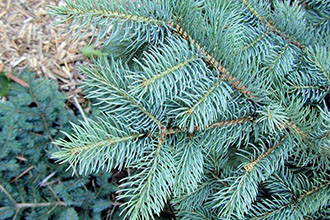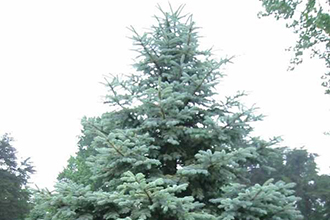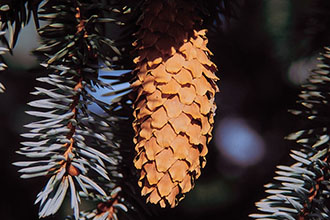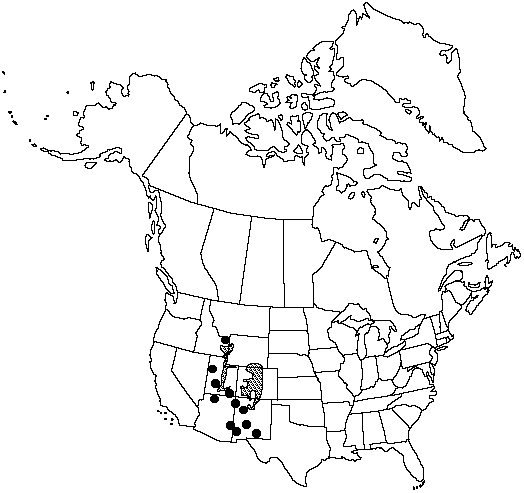Taxonomy: Kingdom - Plantae (plants). Subkingdom - Tracheobionta (vascular plants). Superdivision - Spermatophyta (seed plants). Division - Coniferophyta (conifers). Class - Pinopsida. Order - Pinales. Family - Pinaceae (pine). Genus - Picea A. Dietr. Species - Picea pungens Engelm.
Ecology: Blue spruce is a native evergreen tree with a dense, pyramidal to spire-shaped crown. The oldest blue spruce was 600 years. The shallow roots of blue spruce restrict it to moist sites where water is close to the surface. Blue spruce occurs on montane streambanks; well-drained floodplains or cobble flats; first-level terraces; ravines; intermittent streams; or subirrigated, gentle slopes. Blue spruce occurs in various seral stages from pioneer to climax. Its successional status depends on location and associated species. Blue spruce is a pioneer species in riparian communities that are subject to periodic disturbances, such as scouring and flooding. It is present in all size classes along the riparian systems and on the lower slopes in the southwestern United States, where it may be a topoedaphic climax species. Blue spruce is an intermediate to late, long-lived seral or climax species in montane or subalpine zones. Blue spruce is intermediate in shade tolerance. It may be seral to or climax with any of the conifer species in the mixed-conifer forests. Quaking aspen and lodgepole pine (Pinus contorta) can be seral to blue spruce.
Picea pungens is the 5th most abundant species in the Utah Forest Dynamics Plot (UFDP) by number of stems, and the 5th most abundant species by basal area. Most Picea pungens in the UFDP are found growing in association with Pinus longaeva on a gently sloping part of the plot with geology characterized as old landslide deposits of Claron formation parent material.



